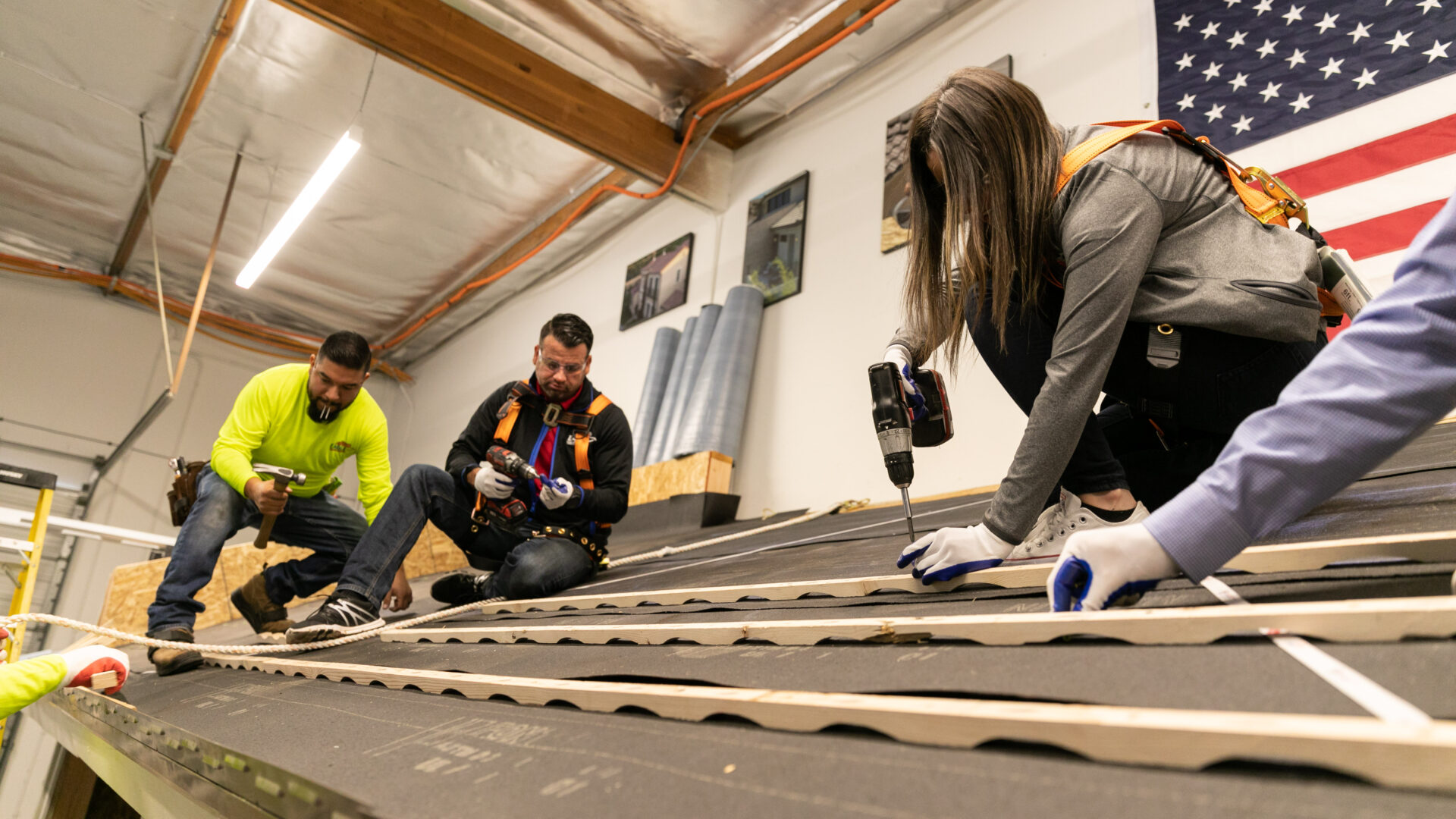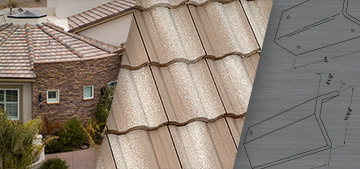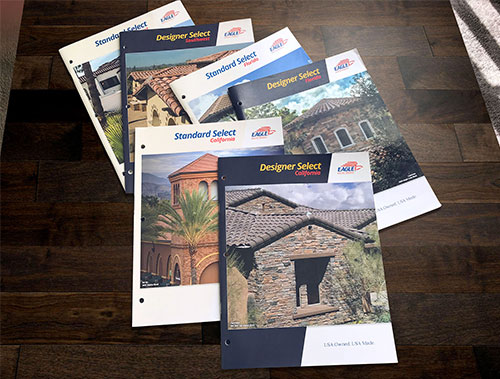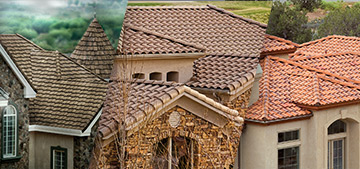At Eagle, we pride ourselves on having the best technical team in the concrete roof tile industry. Equipped with extensive knowledge and many years of experience in roofing, they are here to answer any questions you may have about our tiles, components, product installations or other technical topics.
We asked our Director of Business Development and technical team leader, Tyler Allwood, five questions to get his behind-the-scenes insight into the industry.
What is the most frequently asked technical question that you get about our concrete roof tiles?
“I would say weight is the number one concern that comes up in conversations about concrete roof tile. We certainly understand the concern, but we always try to explain that “our weight is our strength.” The weight of our products makes them durable, resilient, sustainable and the most energy-efficient steep-slope roofing product. Additionally, we take the time to explain that the structure of most roof truss systems is designed to hold the weight of a concrete tile roof. The most common truss systems in the US are 2”x4” lumber trusses set at 24” on center, but the size and spacing of the trusses do not determine the weight carrying ability of the roof. It is all about the webbing of the trusses (cross-bracing). We always advise calling an engineer to inspect trusses that have only ever held lighter roofing products. Typically, a roof that had tile on it before will be fully capable. Sometimes a roof truss system that held lighter roofing products, like asphalt shingles, will need upgrades (usually inexpensive) to be able to accept a new concrete tile roof.”
What is the Tile Roofing Industry Alliance’s multi-year thermal heat study?
“We are working with the TRIA to institute a first-of-its-kind study of the effects of heat on tile roofs compared to shingle roofs. We will be building test roof decks in 10 climate zones throughout the United States. These test decks will be outfitted with sensors that measure ambient, rooftop, and attic temperatures under tile and shingle roofs that have the same CRRC reflectivity rating in both the light and dark ends of the spectrum. We will, additionally, incorporate sensors that show the flow of ohms, which will help us determine the number of watts of electricity required to cool a conditioned space under the roof decks. We will have live access to these sensors to see the effects throughout the year and after three years, we will present all our data to a recognized third-party laboratory to verify the results.”
Which of our components are the most popular in the Eastern U.S. markets versus the Western U.S. markets?
“In the Eastern United States, the vast majority of tile roofs are installed over self-adhered underlayments, so our Eagle Armor and Secure Guard 60 are fantastic products to consider. The new star throughout the country is our Secure Roll product. Contractors and installers love the flexibility, durability and best-in-class fully adhered butyl back. All our customers love the warranty, which—at 30 years—is the best in the industry.”
Using our concrete roof tiles and components, what is the most effective and durable roof system that a roofer can install?
“This is a hard one to answer as it is best to approach each roof individually. There will always be details that affect the system a contractor chooses to install. We try very hard to encourage contractors to think about a good, better, best approach. We provide products and systems that allow them to easily propose three levels of quality to their customers. Typically, the good system is going to be installed to code with a minimum number of upgrades. We offer plenty of upgraded component products to allow them to offer their customers. This includes underlayments like True 2-40, Eagle Armor and Secure Guard 60. Secure Roll is also a great way to take the roof system to the next level. We also offer systems like the Ventilated Roof System (VRS), which incorporates our arched battens, vented eave metals and upgraded vents. While there is an additional cost with these upgrades, by stacking the individual warranties, the contractor can offer their customers a lifetime roof they can trust.”
What is the most common installation mistake that roofers make with concrete tiles?
“The most common mistake is not referencing the TRIA manual for their region when proposing, planning and installing the roof. The TRIA has two installation manuals that are also code-body documents. One is the Concrete and Clay Roof Tile Installation Manual for most of the country and the other is the Florida High Wind Concrete and Clay Tile Installation Manual, created with the Florida Roofing and Sheet Metal Contractors Association (FRSA). They are easy to follow and available for free online. Of course, we have the best technical team in the industry at Eagle and we are always available to help and answer any questions.”
Visit our Technical pages for further technical specifications, code approvals, installation guides, NOA forms and more.
For direct assistance from an Eagle Technical Representative, contact our team:
For Technical Questions West of the Mississippi:
Victor Rosas
National Components Manager and Western Region Technical Representative
Phone: 909-440-4623
victorr@eagleroofing.com
For Technical Questions East of the Mississippi:
Manuel Oyola
Technical Representative
Phone: 561-436-5765
Fax: 561-852-7747
manuelo@eagleroofing.com




